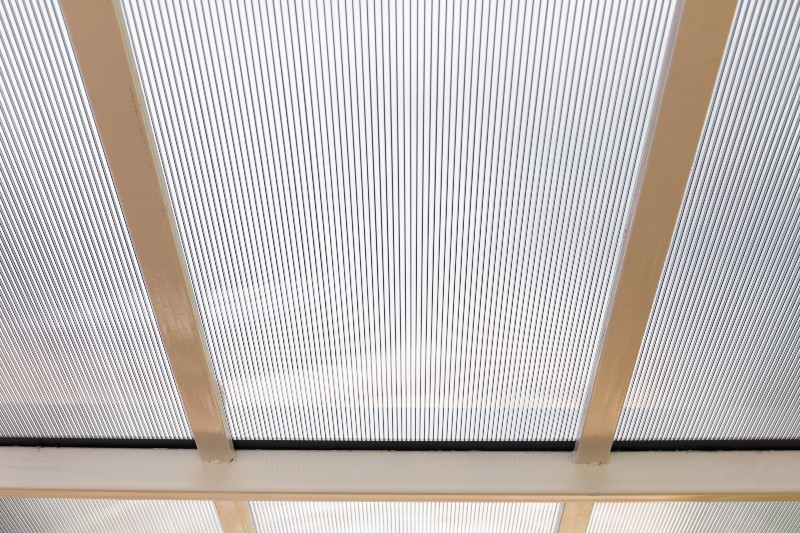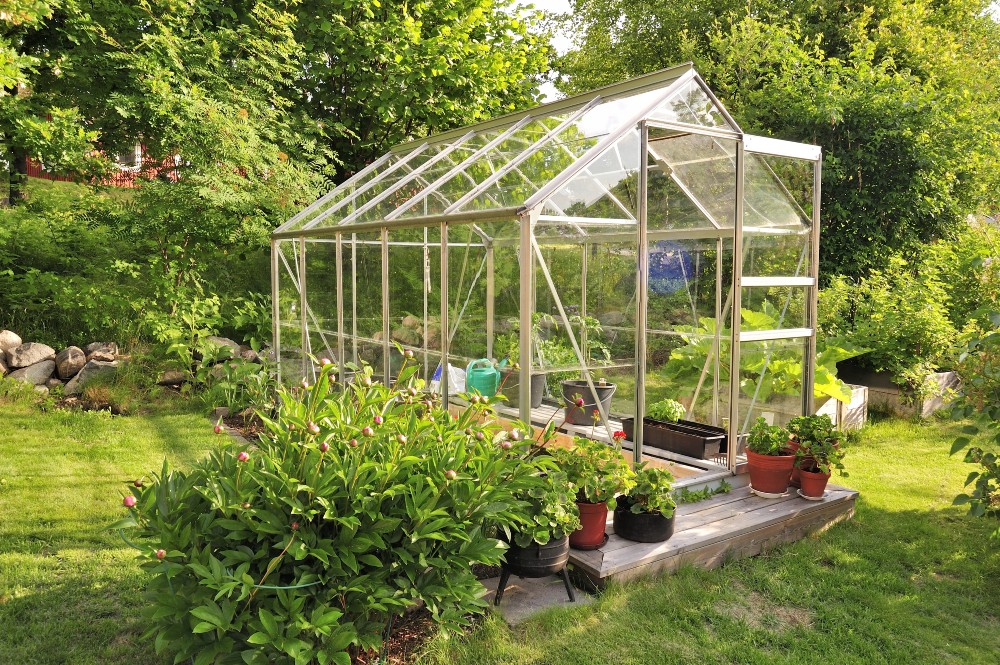A greenhouse’s roof can determine the success or failure of the growing plants inside. While most greenhouses are built with the same material on their roofs and sides, more direct sunlight will shine through the top of the structure over the course of a day. With this in mind, it’s important to choose a reliable, cost-effective roofing option. Read on to learn the pros and cons of common greenhouse roofing materials.
Glass
Glass is the most permanent and traditional solution for a greenhouse roof. The clearest and most light-permeable material, it can be long-lasting when properly installed. Glass is often the premier choice for permanent greenhouses, sunrooms or solariums.
Tempered glass, which is often up to five times thicker than ordinary glass, is least likely to shatter or crack. A tempered glass greenhouse roof typically does a very good job of holding wet, heavy snow for weeks without collapsing.
Glass greenhouse roofing does have a downside, however. It typically has the highest up-front cost. Much of this is due to the price of the glass, but it’s also because the heavy roofing material requires sturdy, strong framing to support it.
Special care must be taken to construct and properly seal glass greenhouse roofing to prevent leaking. Glass is also an inferior insulator and carries a higher risk of breaking compared to other available greenhouse roofing materials. When properly cared for, tempered glass has the potential to last decades. That said, even the strongest glass will break under a sudden, jolting impact. It’s not uncommon for glass greenhouse roofs to crack or break under stress from hail or impact from a wayward rock or baseball.
Fiberglass
Fiberglass panels or sheets are a less expensive alternative to tempered glass. Relatively durable, they can be used in permanent greenhouses for 15-plus years. Much lighter than glass, fiberglass does not require strong, expensive, heavy-duty framing. The material is durable enough to hold up to exterior elements and relatively harsh weather.
Over the years, however, the sunlight penetration will be reduced. For this reason, fiberglass demands regular maintenance to maintain optimal or even adequate light permeability. Fiberglass also lacks the flexibility of other types of greenhouse roofing.
Polyethylene
Plastic or polyethylene film is a flexible, inexpensive and easily applied greenhouse roof covering. It’s comparable to glass in light-permeability. For small, portable or temporary seasonal greenhouses, polyethylene film can be a cheap, easy, quick greenhouse roofing solution. It’s also relatively easy to add to greenhouses with arched or awkward roofs.
Certain types of polyethylene film can be durable enough to last up to a few years, and some have additives that help to reflect light and radiate heat into the interior greenhouse. Unfortunately, film coverings are not nearly as durable as fiberglass or glass. They also require the most frequent replacement, making them a poor option for permanent greenhouses.

Polycarbonate
Double-layered polycarbonate greenhouse roofing is often the best greenhouse roofing material where cold temperatures and energy costs are concerned. Usually constructed between two layers with equally spaced “webs,” the material retains heat quite well. It’s also much more durable than plastic film and flexible enough for use on some curved roofs.
Reasonably long-lasting, polycarbonate greenhouse roofing can remain durable for up to 10 years. That said, the double-layer construction can interfere with light permeability. Polycarbonate materials are also susceptible to yellowing, although acrylic varieties are less likely to experience this drawback.
While durable, polycarbonate will not last as long as fiberglass or glass.
The Bottom Line
Greenhouse roofing is not a cookie-cutter, one-size-fits-all project. Your needs will vary based on the structure, your region and your individual goals. When it comes to choosing a roof for your greenhouse, there are many considerations, including the strength of the structure’s framing and your individual budget.
With this in mind, it’s important to get input from an experienced, reputable roofing contractor who understands the unique needs and challenges associated with greenhouses. At A to Z Roofing, we can help you determine the best roofing material for your greenhouse, whether it’s polycarbonate panels, glass, fiberglass or something else entirely.
With decades of experience, we’ve developed a widespread, well-earned reputation as one of the state’s premier roofing contractors by providing expert workmanship and attentive, honest customer service. Contact us to learn more and get a free estimate on your next roofing project.

